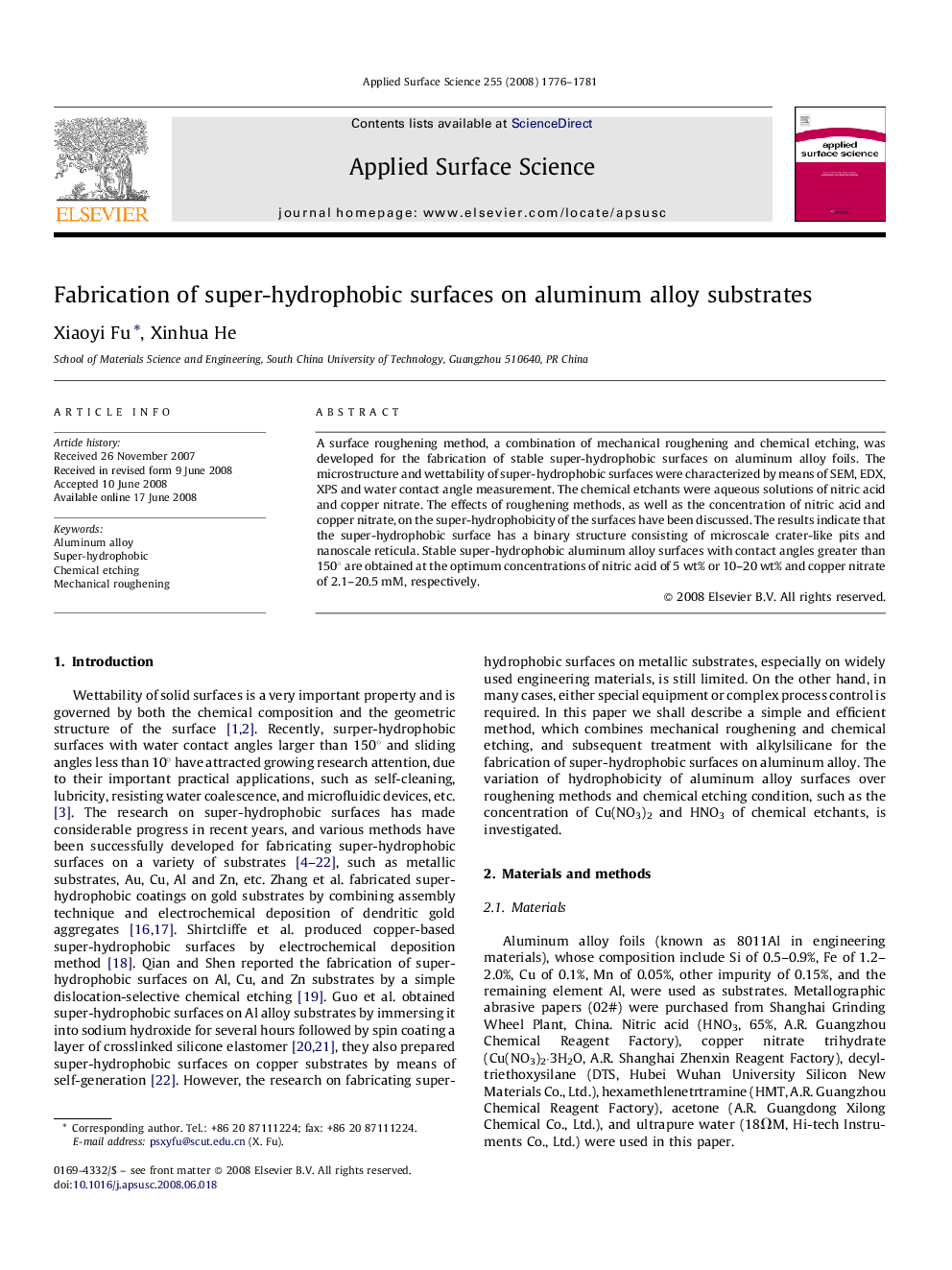| Article ID | Journal | Published Year | Pages | File Type |
|---|---|---|---|---|
| 5363171 | Applied Surface Science | 2008 | 6 Pages |
A surface roughening method, a combination of mechanical roughening and chemical etching, was developed for the fabrication of stable super-hydrophobic surfaces on aluminum alloy foils. The microstructure and wettability of super-hydrophobic surfaces were characterized by means of SEM, EDX, XPS and water contact angle measurement. The chemical etchants were aqueous solutions of nitric acid and copper nitrate. The effects of roughening methods, as well as the concentration of nitric acid and copper nitrate, on the super-hydrophobicity of the surfaces have been discussed. The results indicate that the super-hydrophobic surface has a binary structure consisting of microscale crater-like pits and nanoscale reticula. Stable super-hydrophobic aluminum alloy surfaces with contact angles greater than 150° are obtained at the optimum concentrations of nitric acid of 5 wt% or 10-20 wt% and copper nitrate of 2.1-20.5 mM, respectively.
